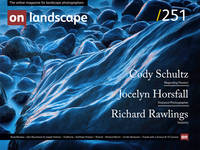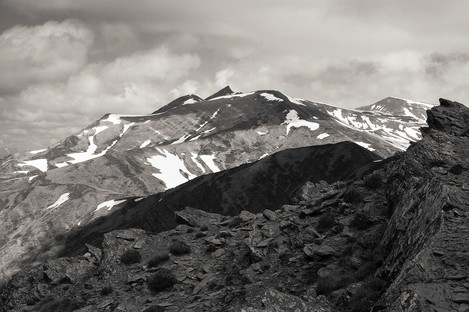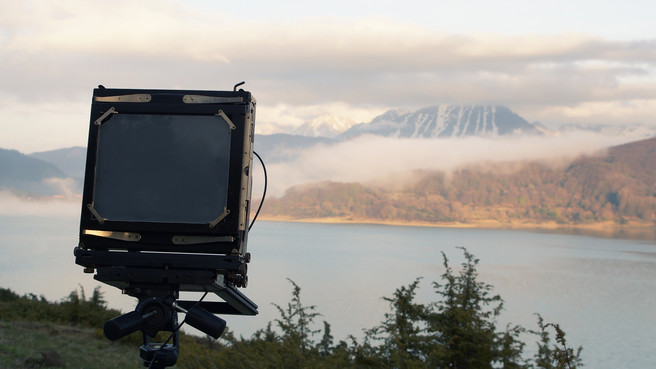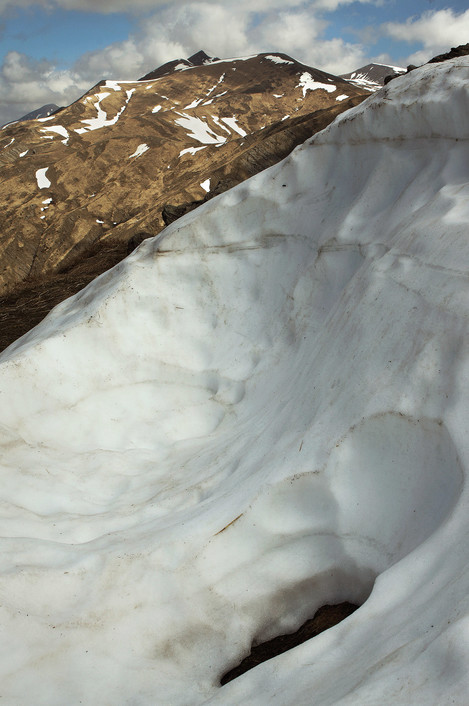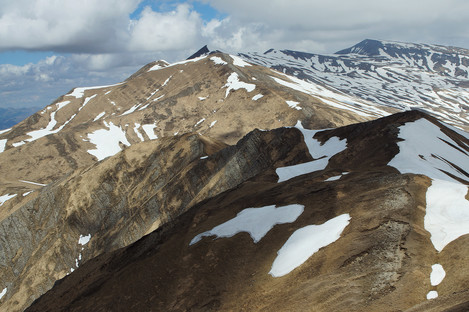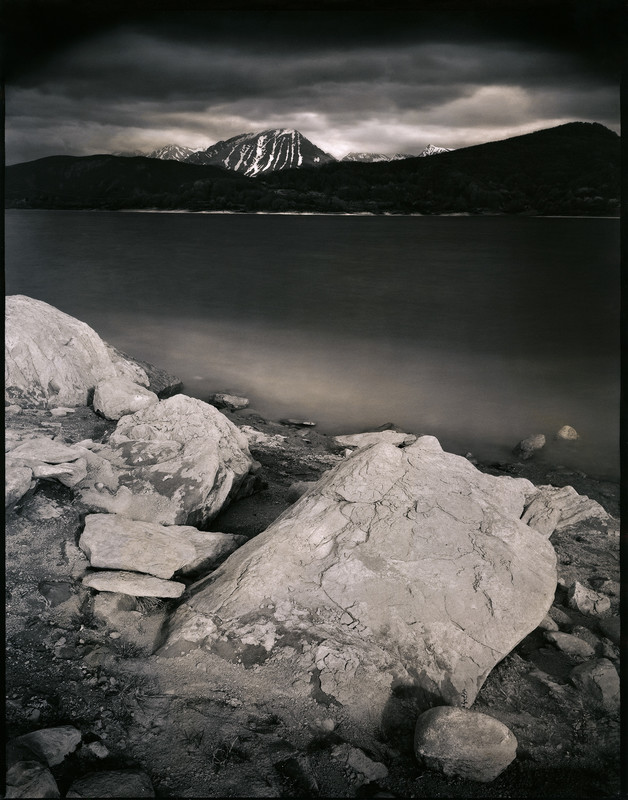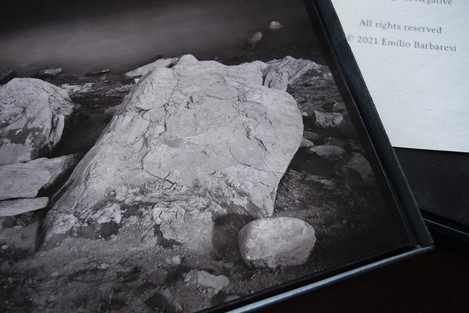A trip to Lake Campotosto

Emilio Barbaresi
My name is Emilio Barbaresi and I am an analog and landscape photographer from Center of Italy.
My photographic research began at DAMS in Rome (2010-2013). There I studied cinema, but it was in photography that I found the greatest stimulus and enthusiasm. Subsequently, I followed the course of Graphics and Photography at the Academy of Fine Arts in Rome and finished in 2016.
Since childhood I have been in close contact with nature, from the Dolomite mountain ranges to the woods of central Italy. In these contexts I discovered and probed my own sense of freedom and airiness, which I have pursued and converted into my photographic research.
To follow or chase this dedication, this feeling, my approach to landscape photography was almost exclusively focused to the use of Large Format Cameras of 4x5 and 8x10 inches and to silver gelatin print in darkroom.
After my academic studies, on the one hand I pursued my photographic research on landscape, carrying out graphic works, 3d drawing and commercial photography for companies and individuals separately. In recent years, I decided to want to devote myself solely to photography, in order to be able to create and push myself deeper in this path of mine.
Large Format Photography has led me to re-evaluate many aspects of my research of images. First of all my vision and the landscapes on which I focus. No doubt.
The transition from 4x5 format to 8x10 has further accelerated this growth, opening the doors to a new dimension of photography; from the study of the image through the large focusing screen, up to the print, and therefore a real and concrete image previously elaborated, inverted and imagined.
One of the landscapes that has been inspiring me for years is Lake Campotosto which is in the Gran Sasso National Park in Central Italy. I will never get tired of heading there just to visit it, confront myself with it and with my changes, or more resolutely go there and take new images
It is one of the Apennine landscapes still capable of that feeling of non-contamination in its purest form, and where there is a wide choice of contexts, from its high rocky peaks (the surrounding mountains are the highest in the whole central Italy, with the colossus of Corno Grande or with the shocking geological conformations of Monte Corvo) to the dense forests of beeches and red maples, or the crystalline waters of high-altitude lakes.
I decided in a window of good weather between the Covid restrictions at the end of last winter, to plan a trip and to spend a few days alone in the places that represented the beginnings of my photographic research. This location inspires me more than ever in dealing with my Seneca 8x10 Camera. It boasts its year of production in 1927 and so its wood is almost a century old.
My intent is mainly to take a wide panorama from an elevated position overlooking Lake Campotosto. The lake is an artificial lake and if the weather conditions allow it, I planned to explore along the banks and track down some large boulders which exist because of its man made origin; it is, in fact, the second-largest artificial basin in Europe.
I arrive at the place where I will spend the first night. The beauty of the lake excites me as always but the temperatures were considerably lower than I expected. Never mind, I expect that during the next day, large cloudy banks will intensify right on the lake, which will add an intriguing element.
The first day I decide to hike in the mountains that surround me, so I head towards the Laga massif, to its south-facing point, which borders the Gran Sasso group. I realise how underrated these mountains are and how much they offer in terms of landscape and personal challenge. I am deeply satisfied: with the way the mountain responds positively to my enthusiasm for freedom and discovery. Besides the photographic features, where dedication and concentration are a primary part, I felt a physical need to approach the landscape on the emotional side.
On my way back, I know that all the work for which I am here has yet to come. I calmly observe the weather conditions. A strong wind has risen and, the lake's water ruffles and thick clouds from the Adriatic and Tyrrhenian coasts collide here. The scenario is more than favourable to the eyes of a photographer.
I wander a bit in search of a view that reflects the image that I visualise mentally and that I would like to create. The Large Format and the 8x10 format, in particular, have taught me that the self confidence with the workflow and consequently of the ideas that contributes considerably to eliminating waste in terms of time and material. This time I have brought with me only two plates to be exposed, with the very intention of using only one. In short, a good training ground for acquiring precision in what you are doing, as well as acquiring spontaneous attention to the more or less suitable light conditions, especially in very changing situations such as the ones in this case.
I have a clear image of the photo that I would like to take, in which there is a well-defined foreground and in the background, there is a remarkable scenery of the beautiful and massive mountains still covered by snow. To do this I rely on a wide-angle lens; I found myself using it more and more, with great joy.
It is satisfying to have a lot of air in the frame, to give plenty of breath to the elements, and at the same time immersing myself in the context. I took with me a beautiful Schneider Kreuznach 210mm which in the 4x5 inch format would be equivalent to a 70mm medium telephoto but in the 8x10 format it is a 35mm! Not too distorting but wide enough to be able to realize what I imagine, great!
I walk a bit, quietly, completely alone, not only because I have no company but because Campotosto lake is isolated in this season. In fact, it isn't a tourist destination, given the cold and the altitude (over 1300 meters above sea level). In my opinion, it is a treasure to be kept carefully, which makes me live it with a feeling of affection, despite its austerity.
In order to find the right composition, I want to first understand the landscape, which is always very different from the way I keep it in my memories. Basically, this is the engine that always leads me to return to places I know, towards something that I can find in a new and unexpected way.
This time, moreover, there is the 8x10 Camera which I have already used in various contexts, including high mountain ridges. From now on I want to push its technical possibilities.
After considering the most harmonious lines and shapes among a set of rocks and having balanced the right weights on the frame I find an arrangement that is just right. The most complicated part is yet to arrive: focusing on the foreground and, at the same time, on the mountains in the background. In fact, my Camera, especially with these older wide-angle lenses, does not allow large movements like modern models and you can easily risk clipping or vignetting the edges of your frame. However, the image projected on the focusing screen inspires me a lot. I take great care with it without wasting precious time because I see that the orange-toned light of the sunset is rapidly losing intensity to make space for the night. It’s done, a few seconds and the image is exposed.
I don't know about the actual result, I have to wait to develop and then print the final image, essentially bringing it to life. Is fine tonight, though. I have the vital feeling of recognising the path I have chosen. Now it's time to return with the satisfaction and the beauty I have experienced and breathed once again.

